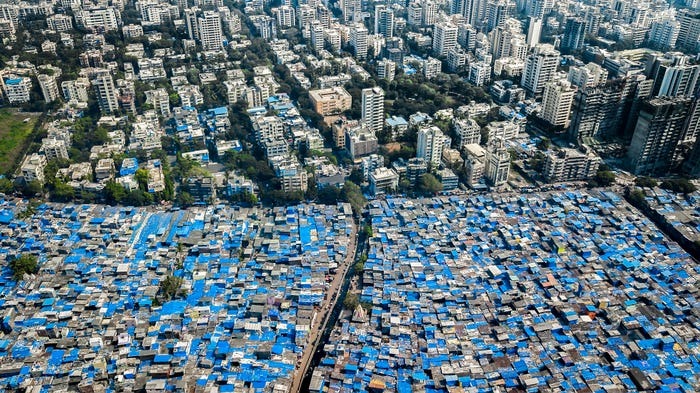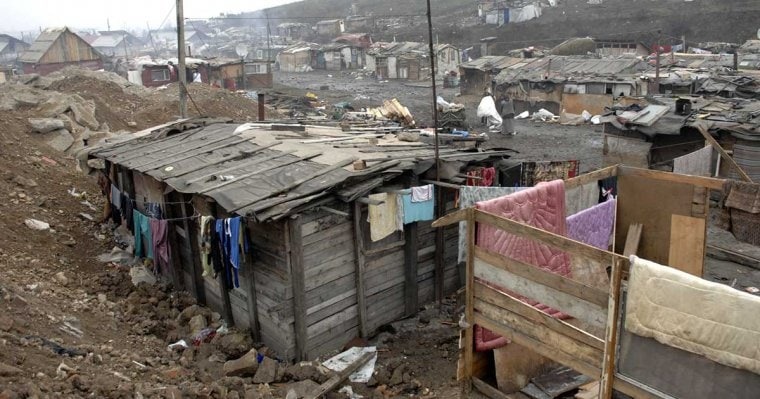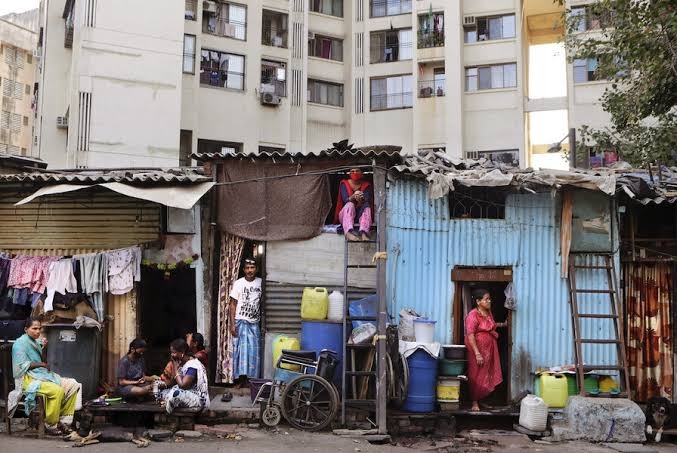Approximately 25% of Indians live in urban poverty. These 81 million people are estimated to be living in poverty and India’s urban poor continue to struggle to find their place in congested urban cities.

We all have at some point or another noticed the striking disparity that plagues the urban cities in India. Sky-high, well-planned towers stand in sharp contrast with the meagre impoverished settlements that rather come across as unwarranted and arbitrary. With thousands of people crammed in claustrophobic and contaminated settlements, the urban cities encompass a lot more than what gets concealed by the gleaming flashes of the affluent.
There are 13.7 million slum dwellings in India, with an aggregate populace of 65.49 million people. Up to 65% of Indian city areas have neighbouring slums where residents live in small dwellings next to one another. It is this segment of the population that occupies the periphery of the urban cities and is dealt with as a disposable excess.
India’s urban population will roughly double between 2018 and 2050, from 461 to 877 million, in line with the United Nations assessment on World Urbanization Prospects 2018.
The constraint of India’s Urban Poor: The urban experience and growing urban poverty

The urban cities are crammed with low-lying settlements, characterised by destitute slums filled with a lack of proper infrastructure and degraded conditions. Contradicting to well-planned and constructed formal neighbourhoods of the city, these informal sectors house India’s urban poor as they plunge deeper into urban poverty.
Urban poverty is the collection of economic and social issues that are prevalent in industrialised cities and are caused by several factors, including the development of comfortable dwelling standards, the rise of individualism, social fragmentation processes, and the dualization of the labour market, which leads to social dualization (a gap among those who locate themselves living in conditions of well-being and those who remain in the lower socioeconomic strata).
Urban poverty represents a kind of poverty which is notably apparent in megacities and is characterised by poor living conditions, low income, a lack of basic services, and a poor quality of life. It is challenging to decrease exploitation, relieve suffering, and give those who have already moved into or are preparing to move into the city better humane work, living, and growth conditions.
For those left behind, life is getting harder as cities around the world develop quickly. The absence of infrastructure in remote areas forces residents to search for jobs in India’s megacities, which is one of the root reasons for urban poverty.
Urban poverty growth is primarily concentrated in megacities. For nearly two decades, India has had one of the fastest-expanding economies in the world. Cities in India play a significant part in the country’s economic development. India’s cities are its economic hubs and a draw for a sizable rural population looking for a better life.
The growth in the number of informal settlers is outpacing urban development, and no nobody wants to assume responsibility for the slums or perhaps the people who live in them, leaving India’s poor in terrible conditions.

The pressure on cities from population growth has increased as the industrial and service sectors have developed. In 2030, 40.76% of India’s population is projected to live in urban areas, according to a survey done by the UN’s State of the World Population report in 2007.
Rapid urbanisation has negative effects on cities, including overpopulation, a severe lack of housing and necessities, environmental pollution, unemployment, and social instability. Unplanned development is an element of the strategy for creating a developed city, which merely serves to reinforce the rich-poor divide already present in urban areas.
India’s urban poor: The plight of marginalized and causes of urban poverty

Rapid urbanization has given birth to widespread ‘slums’–overcrowded settlements that are characterised by below-standard living and impoverished conditions, lack of services and squalor. In developing countries, the slums have now more or less started to imply informal settlements. Often marginalized and tagged as breeding grounds for illegal and awful activities, these slum settlements inhabited by India’s urban poor have myriad stories to tell.
From failure to incorporate such a large chunk of the population in developing policies to casting out large strata from the social fabric, the stories of unequal distribution of wealth and opportunities reverberate from these settlements.
It is impossible to ignore the significance of informality because it is an integral aspect of India’s urban fabric. Over 60% of the city’s economy and 70% of the working population are employed in the informal sector. In large cities, between 25 and 30% of the population resides in slums and other informal communities.
People living in informal settlements continue to struggle with low pay and poor service because they are not covered by social safety nets. The urban affluent class and administrators are outright hostile to the urban poor. Further, they continue to have vulnerable housing, poor social security, lack of healthcare facilities, limited rights to property, inadequate sanitization and continual risk of forced eviction.

They communicate with us in a variety of ways, but their most compelling message is that our society’s social and geographical organisation was created and perpetuated unequally. Working hard in informal sectors and forming the backbone of the urban city’s economy, India’s urban poor continue to find their place in society as they struggle in congested cities and urban poverty continues to thrive.













